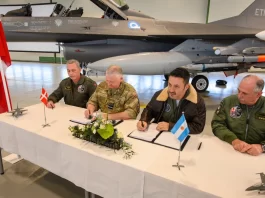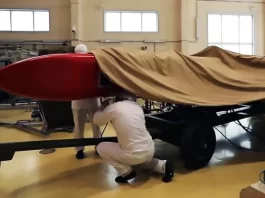The decision to replace its current fleet of Airborne Warning and Control System (AWACS) aircraft, specifically the Boeing E-3A, with the next-generation airborne early warning and control (AEW&C) Boeing E-7A Wedgetail, was made public by the North Atlantic Treaty Organisation (NATO) on November 15, 2023. The procurement strategy entails the procurement of six new E-7A Wedgetail aircraft. Boeing is projected to initiate production of these aircraft, and the initial aircraft is expected to be operational by 2031. The consortium of NATO member states approved this initiative, which represents one of the organisation’s largest acquisitions, earlier this month; nevertheless, the official cost has not been disclosed.
The fleet, which is stationed at the German air base in Geilenkirchen and is part of the NATO Airborne Early Warning and Control Force (E-3A Component), comprises fourteen of the eighteen Boeing E-3A Sentry aircraft that were delivered in the early 1980s. By 2035, the service life of these aircraft is scheduled to have expired. Six E-7A aircraft acquisition is regarded as a minimal replacement, and reports indicate that the quantity may be increased.
The NATO Support and Procurement Agency (NSPA) requested information regarding the successor to the AWACS system in late 2022. After evaluating the proposals, NSPA stated that the E-7 is the “only known military-ready system that does not require development,” capable of fulfilling NATO’s specifications, and can be delivered on schedule. The selection of the NATO E-7 aircraft was assured following the US Air Force’s February 2023 determination to acquire E-7 aircraft to replace its current E-3 fleet. The US Air Force is scheduled to receive 26 E-7A aircraft in serial from 2027 to 2031; deliveries by NATO will commence after the US acquisition is finalised.
Boeing initially developed the E-7 (Boeing 737 AEW&C, Australian designation Wedgetail) for a 1999 Royal Australian Air Force contract. The Australian industrial sector provides a number of its subsystems. Operating on the Boeing 737 NG (Boeing 737-700ER modification), the aircraft features an AESA in a fixed, elongated dorsal fairing and a Northrop Grumman Multi-role Electronically Scanned Array (MESA) radar system. Australia obtained six E-7 aircraft from 2009 to 2012 (although their completion was substantially delayed from 2006 onwards). In May 2015, the country proclaimed the aircraft fully operational.
Additionally, Boeing 737 AEW&C (E-7) aircraft have been acquired by Turkey (received four aircraft in 2008, officially entering service in 2014, designated E-7T Peace Eagle) and South Korea (four aircraft in 2012). In 2019, the United Kingdom signed a contract to purchase five E-7 aircraft (British designation Wedgetail AEW.1) to replace its E-3D aircraft in the Royal Air Force. The UK initially reduced the order to three aircraft, but recent reports suggest plans to restore it to five units. The first E-7 aircraft is scheduled to join the Royal Air Force in 2023. 2014 Qatar also signed an agreement to purchase three Boeing 737 AEW&C aircraft, but no further developments have been reported.





